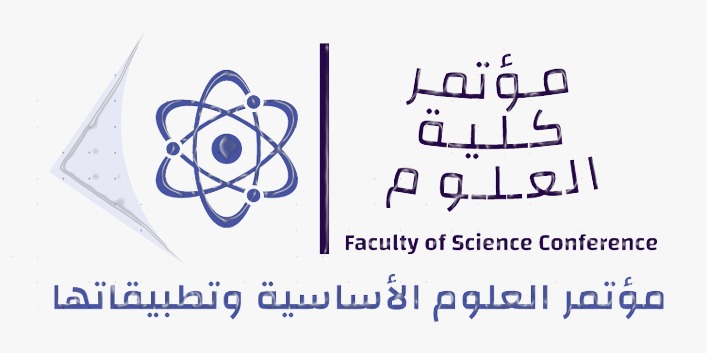العلاقة بين جنس المصابين بخلل في هرمون الغدة الدرقية ومعدل التحليل التراكمي لمرضي السكري
الكلمات المفتاحية:
السكري، الغدد الصماء، التحليل التراكمي، التمثيل الغذائي، الغدة الدرقيةالملخص
تفرز الغدة الدرقية هرمونات الثيروكسين، التي تشارك في التحكم في التمثيل الغذائي والنمو والتطور. كما تؤثر على القلب والعضلات والجهاز الهضمي. يمكن أن تنتج العديد من المشاكل الصحية عن خلل الغدة الدرقية، بما في ذلك مرض السكري والخرف والسمنة. تم الحصول على بيانات 83 مريضًا مصابًا بالسكري من مركز الغدد الصماء والسكري زليتن (2023). وأظهرت النتيجة أن نسبة التحليل التراكمي والجنس بينت علاقة بمعدل(0.021)، ونسبة التحليل التراكمي وهرمون الغدة الدرقية (TSH) (0.515)، أي لا توجد علاقة في هذه الدراسة، ونسبة التحليل التراكمي والعمر كانت (0.439)، أي لا توجد علاقة في المجتمع الذي تم اختياره ، وخلصت الدراسة إلى أن الفحص المنتظم لخلل الغدة الدرقية مهم بشكل خاص لمرضى السكري من النوع الأول، الذين هم أكثر عرضة لخلل الغدة الدرقية.
التنزيلات
المراجع
M. Babić Leko, I. Gunjača, N. Pleić, and T. Zemunik, “Environmental factors affecting thyroid-stimulating hormone and thyroid hormone levels,” Int. J. Mol. Sci., vol. 22, no. 12, p. 6521, 2021.
K. Suastika, “Clinical Use and Limitation of Hemoglobin A1c Examination,” Clin. Diabetol., vol. 10, no. 3, pp. 299–306, 2021.
et al., “Ventilator-Associated Pneumonia in a Tertiary Care Hospital,” Int. J. Curr. Res. Med. Sci., vol. 3, no. 5, pp. 29–32, 2017, doi: 10.22192/ijcrms.2017.03.05.006.
M. Domino et al., “The Effect of Rider:Horse Bodyweight Ratio on the Superficial Body Temperature of Horse’s Thoracolumbar Region Evaluated by Advanced Thermal Image Processing,” Anim. an open access J. from MDPI, vol. 12, no. 2, p. 195, Jan. 2022, doi: 10.3390/ani12020195.
A. N. Rajalakshmi and F. Begam, “Thyroid hormones in the human body: A review,” J. Drug Deliv. Ther., vol. 11, no. 5, pp. 178–182, 2021.
N. H. Ali and A. A. Majeed, “Thyroid hormone concentration and receptor,” Egypt. Acad. J. Biol. Sci. B. Zool., vol. 14, no. 1, pp. 221–230, 2022.
P. Parikh et al., “Animal source foods, rich in essential amino acids, are important for linear growth and development of young children in low‐and middle‐income countries,” Matern. Child Nutr., vol. 18, no. 1, p. e13264, 2022.
J. Köhrle, “Selenium, iodine and iron–essential trace elements for thyroid hormone synthesis and metabolism,” Int. J. Mol. Sci., vol. 24, no. 4, p. 3393, 2023.
J. Farebrother, M. B. Zimmermann, and M. Andersson, “Excess iodine intake: sources, assessment, and effects on thyroid function,” Ann. N. Y. Acad. Sci., vol. 1446, no. 1, pp. 44–65, 2019.
M. von Hafe, J. S. Neves, C. Vale, M. Borges-Canha, and A. Leite-Moreira, “The impact of thyroid hormone dysfunction on ischemic heart disease,” Endocr. Connect., vol. 8, no. 5, pp. R76–R90, 2019.
H. Ohga, K. Ohta, and M. Matsuyama, “Long-day stimulation increases thyroid-stimulating hormone expression and affects gonadal development in chub mackerel,” Comp. Biochem. Physiol. Part A Mol. Integr. Physiol., vol. 275, p. 111334, 2023.
S. H. LaFranchi, “Thyroid function in preterm/low birth weight infants: impact on diagnosis and management of thyroid dysfunction,” Front. Endocrinol. (Lausanne)., vol. 12, p. 666207, 2021.
R. Chattopadhyay, “Magnetism and Human Body,” Int. J. Sci. Res., vol. 13, no. 3, pp. 258–268, 2024, doi: 10.21275/sr24229215922.
S. Caiulo et al., “Newborn Screening for Congenital Hypothyroidism: the Benefit of Using Differential TSH Cutoffs in a 2-Screen Program,” J. Clin. Endocrinol. & Metab., vol. 106, no. 1, pp. e338–e349, 2020, doi: 10.1210/clinem/dgaa789.
J. M. Hershman and P. Beck-Peccoz, “Discoveries Around the Hypothalamic–Pituitary–Thyroid Axis,” Thyroid®, vol. 33, no. 7, pp. 785–790, 2023, doi: 10.1089/thy.2022.0258.
D. J. Bernard and E. Brûlé, “Anterior Pituitary,” Hormonal Signaling in Biology and Medicine. Elsevier, pp. 119–144, 2020, doi: 10.1016/b978-0-12-813814-4.00007-9.
J. L. Harding et al., “The Incidence of Adult-Onset Type 1 Diabetes: A Systematic Review From 32 Countries and Regions,” Diabetes Care, vol. 45, no. 4, pp. 994–1006, Apr. 2022, doi: 10.2337/dc21-1752.
E. Längst, J.-D. Tissot, and M. Prudent, “The Incidence of Adult-Onset Type 1 Diabetes: A Systematic Review From 32 Countries and Regions,” Transfus. Clin. Biol., vol. 28, no. 4, pp. 397–402, 2021, doi: 10.1016/j.tracli.2021.08.344.
M. Abu Aser, H. G. H. Al-Tourk, A. Y. A. El-Jedi, T. K. Aldirdasawi, and M. S. Esleem, “Diabetic Ketoacidosis Complications and Management in Pediatrics: A Narrative Review,” J. Med. Heal. Stud., vol. 4, no. 5, pp. 14–29, 2023, doi: 10.32996/jmhs.2023.4.5.3.
K. K., P. R., and S. P., “CORRELATION BETWEEN SERUM ZINC AND GLYCOSYLATED HEMOGLOBIN LEVELS IN TYPE II DIABETES MELLITUS.,” Int. J. Adv. Res., vol. 5, no. 1, pp. 2565–2568, 2017, doi: 10.21474/ijar01/3044.
S. M. Ferrari et al., “Thyroid autoimmune disorders and cancer,” Semin. Cancer Biol., vol. 64, pp. 135–146, 2020, doi: 10.1016/j.semcancer.2019.05.019.
P. Salazar, P. Cisternas, M. Martinez, and N. C. Inestrosa, “Hypothyroidism and Cognitive Disorders during Development and Adulthood: Implications in the Central Nervous System,” Mol. Neurobiol., vol. 56, no. 4, pp. 2952–2963, 2018, doi: 10.1007/s12035-018-1270-y.
S. Razvi, S. Bhana, and S. Mrabeti, “Challenges in interpreting thyroid stimulating hormone results in the diagnosis of thyroid dysfunction,” J. Thyroid Res., vol. 2019, no. 1, p. 4106816, 2019.
B. Biondi, G. J. Kahaly, and R. P. Robertson, “Thyroid dysfunction and diabetes mellitus: two closely associated disorders,” Endocr. Rev., vol. 40, no. 3, pp. 789–824, 2019.
V. Mehalingam, J. Sahoo, Z. Bobby, and K. V. Vinod, “Thyroid dysfunction in patients with type 2 diabetes mellitus and its association with diabetic complications,” J. Fam. Med. Prim. Care, vol. 9, no. 8, pp. 4277–4281, 2020.
التنزيلات
منشور
إصدار
القسم
الرخصة
الحقوق الفكرية (c) 2024 فاطمة محمد جارالله، أحمد القدار

هذا العمل مرخص بموجب Creative Commons Attribution-NonCommercial-NoDerivatives 4.0 International License.




